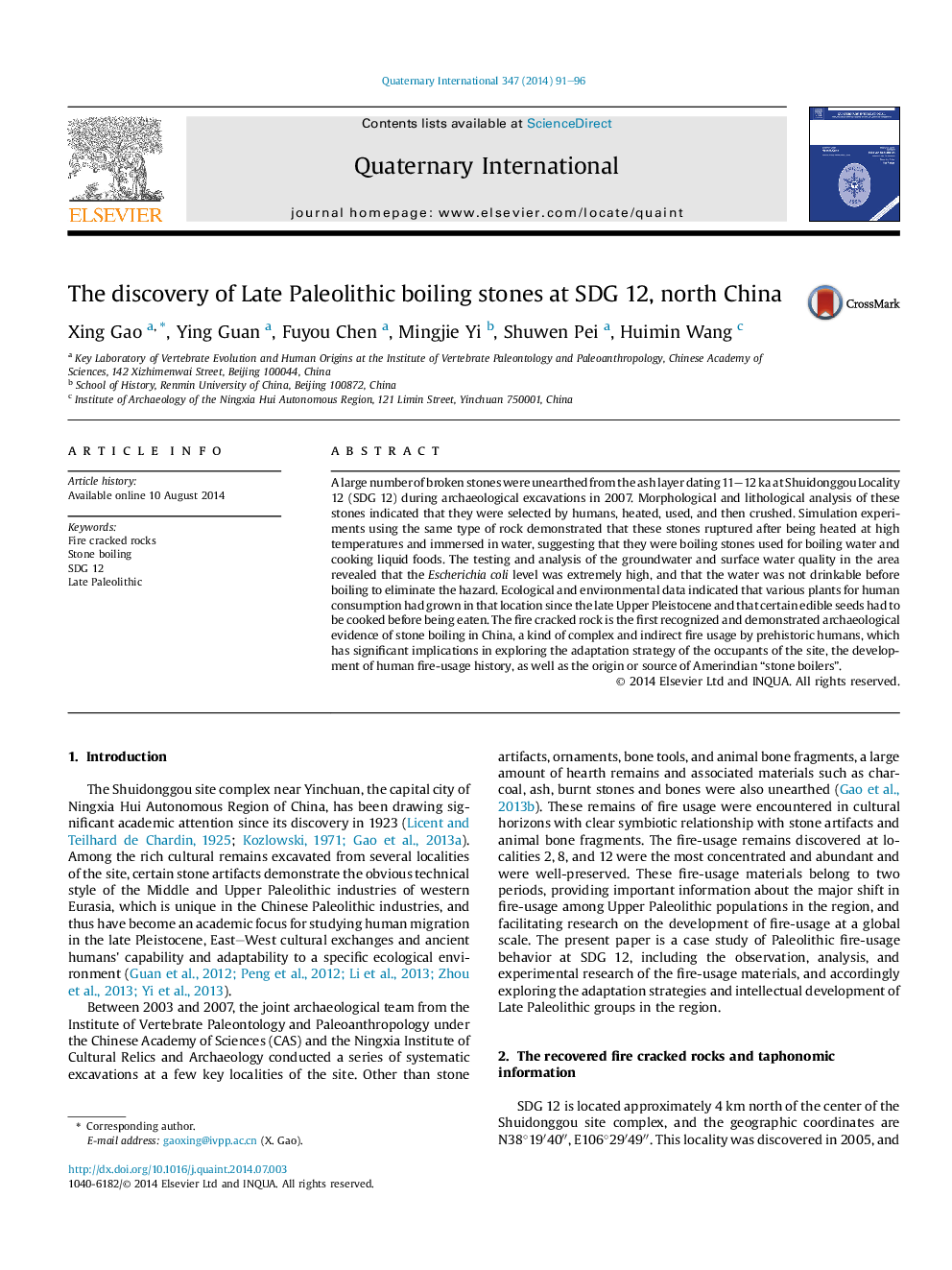| کد مقاله | کد نشریه | سال انتشار | مقاله انگلیسی | نسخه تمام متن |
|---|---|---|---|---|
| 1041088 | 1484149 | 2014 | 6 صفحه PDF | دانلود رایگان |

A large number of broken stones were unearthed from the ash layer dating 11–12 ka at Shuidonggou Locality 12 (SDG 12) during archaeological excavations in 2007. Morphological and lithological analysis of these stones indicated that they were selected by humans, heated, used, and then crushed. Simulation experiments using the same type of rock demonstrated that these stones ruptured after being heated at high temperatures and immersed in water, suggesting that they were boiling stones used for boiling water and cooking liquid foods. The testing and analysis of the groundwater and surface water quality in the area revealed that the Escherichia coli level was extremely high, and that the water was not drinkable before boiling to eliminate the hazard. Ecological and environmental data indicated that various plants for human consumption had grown in that location since the late Upper Pleistocene and that certain edible seeds had to be cooked before being eaten. The fire cracked rock is the first recognized and demonstrated archaeological evidence of stone boiling in China, a kind of complex and indirect fire usage by prehistoric humans, which has significant implications in exploring the adaptation strategy of the occupants of the site, the development of human fire-usage history, as well as the origin or source of Amerindian “stone boilers”.
Journal: Quaternary International - Volume 347, 9 October 2014, Pages 91–96